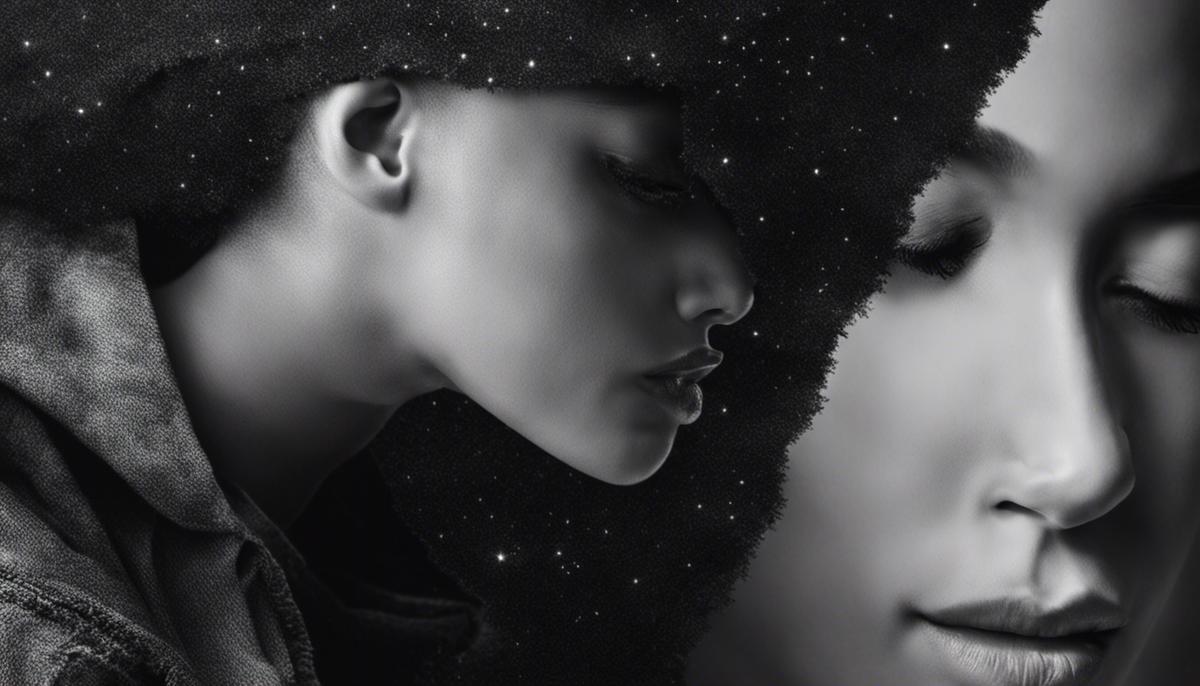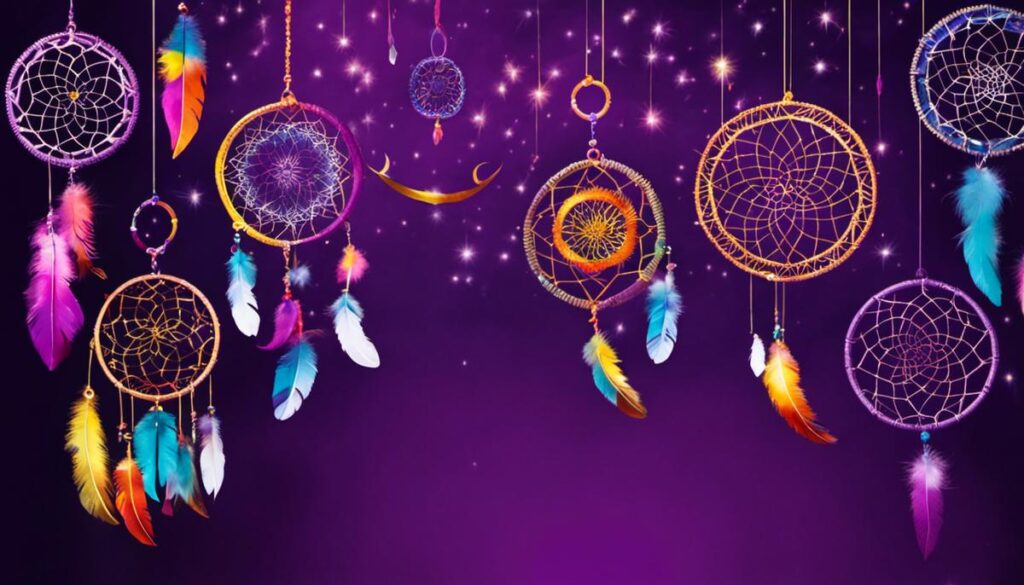Dreams have fascinated mankind since time immemorial, mysterious and often symbolic in nature, they continue to enthral and perplex us. One intriguing aspect of dreams is their color, or in some cases, the lack thereof. Herein, we will delve into the enigmatic world of dreaming, specifically, those dreams experienced in monochrome. We commence our exploration with an understanding of the science behind dreaming, touching upon the phases of sleep, and the role colors play. Following that, a journey into the past brings to light the historical views of dreams presented in black and white. Further, the psychology behind such dreams, interpreting potential symbols, meanings and psychological theories provides a wider understanding from mental perspective. Continuing with the narrative, we present a compilation of personal experiences and case studies, expanding our comprehension of the matter. Finally, we discuss the possibilities and techniques to manipulate the colors in our dreams, an interesting closure to our exploration.
The Science of Dreaming
Understanding Dreaming
Dreaming is a universal human experience, although the content and frequency of dreams can vary greatly among individuals. Scientifically, dreams are narratives and visuals created by the brain during sleep. There are several theories about why humans dream. Sigmund Freud suggested dreams are a representation of suppressed desires, while some researchers theorize they assist in memory consolidation or problem-solving.
The Stages of Sleep
Dreaming typically occurs during the Rapid Eye Movement (REM) stage of sleep. The sleep cycle involves four stages; three Non-Rapid Eye Movement (NREM) stages and the REM stage. The first NREM stage is a light sleep from which it is easy to wake. This progresses to the second NREM stage where the heart rate slows and body temperature drops. In the third NREM stage deep sleep occurs. The final stage of the cycle, REM sleep, involves high brain activity and vivid dreams.
The Relevance of Colors in Dreams
Colors in dreams can carry significant symbolic meanings depending on the cultural context. Some cultures associate certain colors with specific ideas or feelings; for example, in Western cultures red often symbolizes passion or danger, while green might represent nature or tranquility. However, not everyone dreams in color. Research shows some people dream solely in black and white.
Dreaming in Black and White
Contrary to popular belief, not everyone dreams in color. Studies have shown variability in the coloring of dreamed experiences. Early black-and-white media may have conditioned older generations to dream in greyscale. A study published in 2008 in the journal “Consciousness and Cognition” found that people 25 and younger say they almost never dream in black and white. But people over 55 who grew up with little access to color television reported dreaming in black and white about a quarter of the time.
Deciphering Dreams in Monochrome
Understanding the symbolism behind black and white dreams can offer unique insights into our subconscious mind. Within the sphere of dream interpretation, the color black often represents the mysterious or the unconscious realm, while white stands for innocence, purity, and revitalization. A dream manifesting in black and white could further reflect a yearning for simplicity or a less complicated lifestyle. Traditionally viewed, black signifies negativities, and white symbolizes positives, but these interpretations are subject to personal beliefs and experiences. After all, dreams and their meanings are highly personalized, shaped by individual, cultural, and environmental nuances.

Historical Views on Black and White Dreams
History Behind Black and White Dreams
The intricate world of dreams has piqued human interest since ancient times and has been the focus of myriad studies. Despite most people reporting that they dream in vibrant colors, research from as far back as the 1940s and 1950s indicates a substantial number of people recounting their dreams in black and white. Notable psychologists, such as Perky and Fisher, believed this trend was largely due to the extensive reach of black and white media at the time, including the cinema, television, and print. However, with the saturation of full-color media in today’s world, instances of people dreaming in monochrome have markedly reduced.
Interpretation in Psychoanalytic Tradition
From a psychoanalytic perspective, most notably stemming from Sigmund Freud and Carl Jung’s theories, dreaming in black and white is thought to indicate something essential about the dreamer’s emotional or mental state. Black and white dreams are often viewed as representations of deep-seated emotions or issues that are mostly seen in gray areas, or in other words, are ambiguous or unclear. These dreams are thought to reflect the inner conflict between good and evil, rights and wrongs, or positivity and negativity.
Cultural Significance of Dreams in Black and White
Cultural interpretations vary significantly when it comes to dreaming in black and white. In some cultures, such as in Chinese dream interpretation, black and white dreams are not just associated with complexity and mystery, but also with wisdom. It is believed that dreaming in black and white signifies the marked difference between knowing and not knowing, as well as the search for knowledge and enlightenment.
Influence of Art and Literature
Dreaming in black and white has seen imaginative interpretations within literature and the arts. For example, American author Lewis Carroll’s “Alice’s Adventures in Wonderland,” published in the 19th century when photography and print media were in black and white, presents a dream world that could be visualized in black and white. Further reinforcement of black and white dreams can be seen in arts, movies, and television shows – from the use of monochromatic scenes in Ingmar Bergman’s existential films to capturing the essence of dreams in episodes of Twilight Zone or Alfred Hitchcock Presents. Such visual representation in popular culture frequently illustrates intense emotions, nostalgia, and deeper elements of the human psyche, perhaps reflecting common themes found within black and white dreaming.
Neurological and Psychological Perspectives
Modern science features more concrete approaches to unravel the mystery of dreams in black and white. Although the neuro-scientific understanding of why some people dream in black and white remains limited, some researchers propose the idea of neuroplasticity – the brain’s ability to form new connections throughout its life – as a contributing factor. The exposure to black and white imagery during the formative years could make a long-lasting impact on neural connections, influencing one’s perception of dreams. From a psychological standpoint, black and white dreams are often associated with anxiety or depression, as these experiences can limit one’s ability to perceive the full spectrum of color in their dreams.
Reflecting Personal Emotions and Psychology
Dreaming in black and white may sometimes serve as a mirror to one’s emotional and psychological state. Some interpreters see black and white dreams as reflecting certain emotional states such as sadness, exasperation, or a yearning for simplicity and clear-cut answers. To handle complicated emotions or situations, the dreamer might resort to using a monochromatic color scheme—it provides a simple and straightforward approach to understanding and managing their feelings.

Psychology Behind Black and White Dreams
A General Overview of Interpreting Black and White Dreams
Dreams are often thought to be a glimpse into our subconscious mind, revealing emotions, thoughts, and life experiences that may not be openly apparent in our waking lives. Many imagine dreams to be bursting with color, however, this is not always the case. Some individuals experience their dreams entirely in black and white. When it comes to interpreting dreams, black and white dreams assume different meanings based on the specific context of the dream, the events taking place within it, and the emotions the dreamer encounters during and after the dream.
Symbolism of Black and White in Dreams
In the world of dreams, colors are often loaded with symbolic meanings. Black is usually associated with darkness, mystery, or the unknown, while white typically represents purity, innocence, or illumination. Black can also symbolize the unconscious, while white can reflect consciousness or awareness. Therefore, dreaming in black and white might indicate a merging or contrast of these symbolic elements within the dreamer’s life.
Psychological Interpretations: Insights from Carl Jung and Sigmund Freud
Renowned psychologists Carl Jung and Sigmund Freud have shared some theories on the interpretation of black and white dreams. Jung believed that dreaming in black and white could signify a lack of consciousness or awareness about certain areas of life, or it could also depict internal conflicts within a person’s psyche. On the other hand, Freud suggested that black and white dreams might represent repressed memories or experiences from childhood, as children used to perceive the world in simpler, less colorful terms. For Freud, black and white dreams could function as the psyche’s attempt to bring these repressed memories or experiences into the forefront of consciousness.
Possible Reasons for Dreaming in Black and White
- Lack of Color Information: If a person has low exposure to color in their waking life, it might translate to black and white dreams. For instance, growing up with black and white media could influence an individual’s dream palette.
- Emotional State: If someone is undergoing a challenging phase, such as dealing with grief, depression, or anxiety, the emotional turmoil might reflect in their dreams as shades of black and white.
- Memory Consolidation: During the sleep cycle, our brain consolidates memories, and this process can influence how we dream. Essential or significant memories might be coded in color, while less critical ones appear in black and white.
It’s important to bear in mind that interpreting dreams is an exceedingly subjective process, largely reliant on an individual’s personal circumstances and life experiences. The theories proposed by esteemed psychologists such as Sigmund Freud and Carl Jung, combined with the symbolic interpretations of black and white hues, can provide a platform for understanding these unique monochrome dreams. However, the genuine significance of dreaming in black and white often uncovers itself through the dreamer’s introspection and interpretation of their own personal experiences.

Personal Experiences and Case Studies
Monochrome Dreamscapes: A Deeper Look
While most people recount dreaming in vivid hues, an equally interesting subset shares experience of dreaming exclusively in black and white. Psychologist Eva Murzyn from the University of Dundee in Scotland shed light on this phenomenon. According to her study, older individuals reported monochrome dreams much more frequently than their younger counterparts, who grew up in an era of color television and as a result, predominantly dreamt in color.
This intriguing observation suggests that exposure to black-and-white media can influence the hue of our dreams. Despite this insight, drawing a definitive link between exposure to monochrome media and black-and-white dreaming experiences remains challenging. Hence, this topic continues to be a fascinating domain for exploration in dream studies.
Individual Experiences – A Spectrum of Interpretations
The significance and meaning of black-and-white dreams can vary widely from person to person. For some individuals, dreaming in black and white can represent a lack of emotion or a sense of distance from the events unfolding in the dream. For others, the monochromatic dreamscape could suggest a situation or emotion that is particularly clear-cut or black-and-white.
For example, one individual reported a recurring dream where they’d find themselves in a dense, black-and-white forest, which they interpreted as a representation of a difficult period in their life. Another recounted dreams of a monochrome cityscape, symbolizing their straightforward, black-and-white perspective on their urban lifestyle.
Analyzing Black-and-White Dream Meanings
Others have sought insight from professionals, such as psychologists or dream analysts, to interpret their black and white dreams. Often, these experts look at the details, and the feeling that accompanies these monochromatic dreams in order to propose a meaning.
For instance, a psychologist might view a dream’s monochromatic imagery as reflective of feelings of depression, representing the dreamer experiencing their life as lacking in vibrancy. On the other hand, a dream analyst might interpret the absence of color as a sign of simplistic thinking or reduced emotional complexity.
However, one must remember that all dream interpretations are subjective and unique to the individual – what seems to signify depressive thoughts for one dreamer might represent clarity and simplification for another.
Considering Cultural Interpretations
It’s imperative to consider the cultural implications when it comes to black and white dreams. In some traditions, dreams of this nature are believed to carry divine messages or spiritual revelations. However, in various Western societies, dreaming in black and white can be perceived negatively, often associated with anxiety, depression, or a perceived lack of vigor.
No matter whether our dreams are painted in vivid hues or solely in black and white, the interpretation that one gives to their dreams is the most vital component. This interpretation is shaped enormously by one’s understanding, individual perspectives, and personal experiences.
While psychology and science can yield interesting conjectures, the real essence of a dream—be it in color or monochrome—remains an intensely personal matter. The dream world continues to be a remarkably individualistic and subjective realm.

Techniques for Influencing Dream Color
Black and White Dreams: A Peculiar Aspect of Perception
The term ‘dreaming in black and white’ describes a peculiar phenomenon where dreamers don’t envision their dreams in full spectrum, but rather in a range of black, white, and various shades of gray. Although the majority of individuals claim to dream in vibrant colors, there’s still a minority group who report having dreams solely in black and white.
Techniques to Influence Dream Colors
One technique is simple visualization. Before falling asleep, a person can try to visualize vivid colors. Keeping a visual diary during the day can help train the mind to pay more attention to color. Some practitioners also suggest setting the intention to dream in color before going to sleep. Bentley University research found that to some extent, people can influence what they dream about by focusing on a particular subject before bedtime. So, the same could apply to colors.
Another technique comes from neurolinguistic programming (NLP), a method of influencing brain behavior through language, to enable a person to ‘recode’ the way their brain responds to stimuli. NLP practitioners suggest color therapy, where you immerse yourself in the color you wish to dream of during the day, hoping it will carry over into your dreams.
Analysis of Effectiveness of Techniques
The effectiveness of these techniques, however, needs more research. Most evidence is anecdotal and varies dramatically from person to person due to the highly subjective nature of dreams. Some people may find success manipulating the color of their dreams, while others may not. It could depend on factors such as one’s mental agility, awareness, and the predisposition to lucid dreaming.
Potential Consequences
Also, important to discuss are the potential consequences of attempting to manipulate one’s dreams. Given the poorly understood nature of dreams, manipulating them could have unforeseen consequences. Dreams serve a purpose – whether a mechanism for processing emotions, reflecting on life events, or consolidating memories – it is unclear how changing the color scheme might affect these processes.
Finally, there is a psychological aspect to consider. Black and white dreams could signify a person’s outlook or emotional state. Some psychoanalysts argue they may reflect depression or a lack of excitement. Therefore, changing the color of dreams artificially could potentially mask underlying mental health issues that should be addressed professionally.
In conclusion
The ability to influence the color of your dreams is an exciting area of research, but it remains largely uncharted territory. The techniques available are experimental, and while they may work for some, they hold no universal guarantee. Furthermore, the potential impacts on mental health and cognitive processes should be given careful consideration.

As we draw our exploration to an end, it is crucial to understand that while the realm of dreams may continue to be a subject of intrigue and mystery, they can offer us a portal to our subconscious mind. While the debate of black and white dreams versus color dreams could lean on either side based on scientific, historical, and psychological perspectives, they all hold vital significance. Black and white dreams may seem less vibrant but are not necessarily less impactful. Similarly, any technique to manipulate the dream’s color should be approached with caution, recognizing that dreams are highly subjective and personal experiences. Ultimately, regardless of the color, the interpretation and understanding of our dreams can offer us rare insights about ourselves, our fears, desires, and potential.







